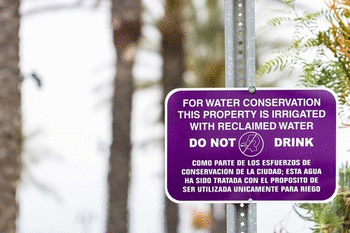Science project
Regrow Cabbage: Vegetative Reproduction and Cloning Plants
Did you finish the last leaf of cabbage? Don’t rush to the grocery store just yet—in this experiment, discover how you can eat the same plant over and over again.
Problem
How can you clone a plant?
Materials
- Two paper towels
- Two plastic bags
- Scissors
- Napa cabbage
- Cutting board
- Kitchen knife
- Permanent marker
- Spray bottle
- Water
- Camera
Procedure
- Take the two plastic bags, and label one “leaf” and the other “stem”.
- Fold each paper towel three times. Use your spray bottle to spray the towel until it is damp.
- Now you’re ready to start cloning! Remove the leaves from the cabbage and set one aside. Have an adult cut the stem crossways, close to the bottom where the roots were.
- You now have a leaf and a piece of cabbage stem. If you give these cabbage pieces some water, will they grow? What will happen?
- Take a photo of each piece before you start the experiment.
- Slip the leaf into the middle of one of the folded paper towels and place it in the “leaf” bag. Then slip the stem into the middle of the other folded paper towel and place it in the “stem” bag. Make sure the bags have a bit of air in them, and close them.
- Leave the bags in a place with light at room temperature.
- Open the bags the next day and look at the color and texture of the pieces of plant. Are any roots growing? Take a photo of the plants, and put them back into the bags. Make sure that the paper towel is still a little bit damp.
- Peek into the bags every day for a week, and make sure that you take a photo each time. What happens to the pieces over the course of the week? What do they look like at the end?
Results
The piece of cabbage stem will start to grow small roots. The piece of leaf will begin to rot.
Why?
While cloning might sound like something that needs to happen in a lab, people who grow fruits and vegetables have been cloning plants for many years.
Plants have different ways of making new plants. The one you’re probably most familiar with is the seed. Plants make seeds or spores so that they can reproduce, or make more of themselves.
Making a seed involves sexual reproduction. Plants have male and female parts. The male parts are called stamens, and they create pollen on the anthers, the ends of the stamens. The female part is called a pistil, and it contains ovules, similar to the eggs that animals have. When pollen from a male flower moves in the wind or on an insect over to the ovules, the plant gets fertilized and can make seeds. When the pollen from one plant meets the ova from another plant, the DNA from the two different plants combines to make seeds that will reflect the characteristics of both parents. The DNA gives instructions that tell the plants what color to be and how tall to grow, as well as other information.
Asexual or vegetative reproduction is another way that plants make new plants. In this case, a plant makes a new plant by itself. It doesn’t need any other plants to help it do this. Strawberry plants are good examples of this. A strawberry plant will send out many little strings, or runners. At the end of the runner, a baby strawberry plant will grow. It has the same DNA as the mother plant, but it’s also a new plant.
People often help plants with vegetative reproduction. When people want to grow new apple trees, they usually take a little bit of the apple tree, cut it, and place it on a new stem. This is called grafting. That way, they can grow the same apples on a new tree. Because they come from the same tree, these apples share the same DNA. They are the same apple grown on a different stem.
When you grew the cabbage, the cells near the root area of the cabbage are able to start growing again and make a new cabbage plant that is the same as the old one. It is a clone. Some plant cells grow new plants more easily than others. Experiment with different parts of plants. What parts grow most easily? Add rooting hormone to help the plants make roots. Can you make a leaf grow roots? A stem?
Education.com provides the Science Fair Project Ideas for informational purposes only. Education.com does not make any guarantee or representation regarding the Science Fair Project Ideas and is not responsible or liable for any loss or damage, directly or indirectly, caused by your use of such information. By accessing the Science Fair Project Ideas, you waive and renounce any claims against Education.com that arise thereof. In addition, your access to Education.com's website and Science Fair Project Ideas is covered by Education.com's Privacy Policy and site Terms of Use, which include limitations on Education.com's liability.
Warning is hereby given that not all Project Ideas are appropriate for all individuals or in all circumstances. Implementation of any Science Project Idea should be undertaken only in appropriate settings and with appropriate parental or other supervision. Reading and following the safety precautions of all materials used in a project is the sole responsibility of each individual. For further information, consult your state's handbook of Science Safety.













